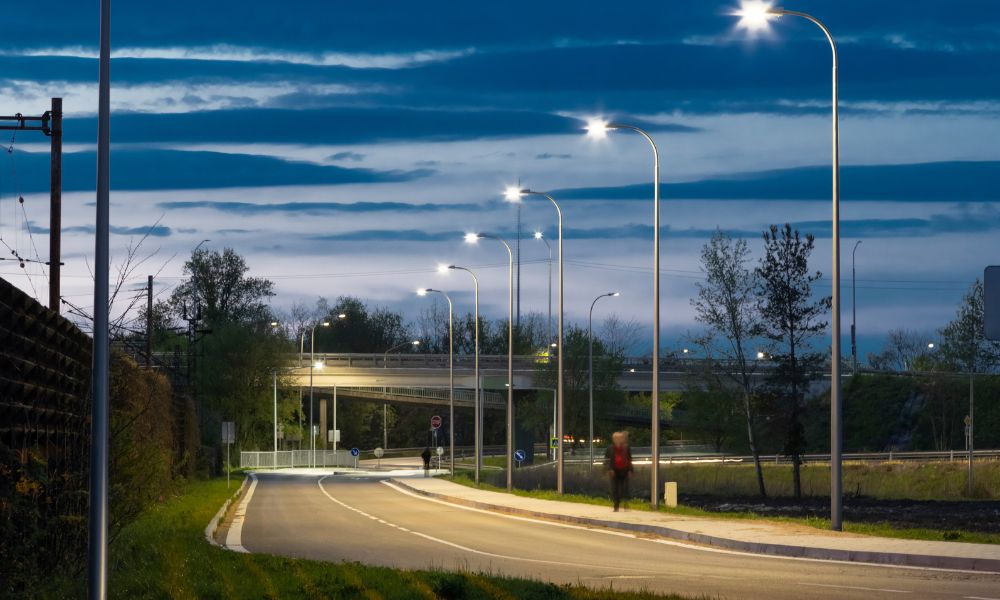When considering traditional streetlights vs. LED streetlighting solutions, examine the factors that highlight the differences and benefits of each. Replacing streetlights is a big undertaking for any municipality, so consider the following features of the available options.
Energy Efficiency
LED streetlighting solutions offer superior energy efficiency. Compared to traditional streetlights, which often rely on high-pressure sodium (HPS) or metal halide lamps, LEDs consume significantly less energy. This not only translates to lower electricity bills but also contributes to a reduction in carbon emissions, making LED lights a more environmentally friendly option. LEDs also produce less heat than traditional streetlamps, putting most of their energy into producing light and losing far less energy as heat. LED lights can also direct light more precisely to where it's needed, reducing light pollution and enhancing the quality of urban nightscapes.
Installation Cost
Traditional streetlights have historically presented a lower upfront investment. However, the initial cost is just part of the equation. LED streetlighting, despite a higher initial price tag, offers long-term savings that can offset the initial investment. The reduced energy consumption and longer lifespan of LED lights mean that the total cost of ownership is lower for LED streetlighting solutions compared to traditional options.
Moreover, LED lightings’ efficiency means that less electrical cabling or wiring is necessary per fixture, cutting the cost of delivering electric power to the lights. This makes LEDs an economically sound choice for municipalities and communities looking to upgrade their streetlighting infrastructure.
Longevity of Bulbs
The longevity of bulbs is another area where LED streetlights outshine traditional streetlights. LED bulbs can last up to 50,000 hours or more, which is significantly longer than the 15,000 to 24,000 hours typical of HPS lamps. This extended life span not only reduces the frequency of replacements but also contributes to the overall cost effectiveness of LED lighting solutions, as the need for new bulbs and the labor costs associated with replacing them are drastically reduced.
Low Maintenance
Finally, the low-maintenance requirements of LED streetlights further solidify their position as the preferable choice. The durability of LED bulbs and their resistance to breakage and vibrations mean that once installed, LED streetlights require minimal maintenance. This reliability not only ensures consistent illumination of public spaces but also reduces the burden on maintenance crews, allowing municipalities to allocate resources more efficiently.
When comparing traditional streetlights vs. LED streetlighting solutions, it's clear that LEDs offer numerous advantages. As technology continues to advance, the gap between traditional and LED lighting is expected to widen further, making LEDs the unequivocal choice for future streetlighting projects.


